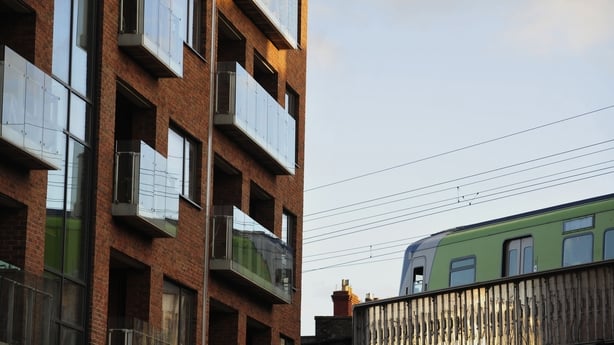Let's talk about duplexes. No, stop. Come back. It’s key to the Government’s measures to prevent institutional funds buying up large swathes of completed housing estates.
After two weeks of headlines around housing issues, the Government had to respond to concerns that big funds were elbowing out first-time buyers. A suite of tax and planning changes was unveiled by Housing Minister Darragh O’Brien and Finance Minister Paschal Donohoe.
Chief among them is that bulk purchases of 10 houses or more will be subject to 10% stamp duty.
The pair explained that excluding apartments from the measures was designed to protect the kind of investment that is currently still needed to fund the construction of apartment blocks.
But notwithstanding the wider policy questions around that decision, is the distinction between houses and apartments that simple?
And how will a duplex be defined? There’s more of them than you might think and they’re crucial to most new developments.
The days of housing estates being built exclusively with two-storey houses with large gardens are largely gone.

Many developments are required by local planning to have a high number of units on site. The density of a development along transport links or in urban areas generally needs to be between 35 and 50 units per hectare.
The average housing estate built in the 70s has between 10 and 20 units per hectare. Those types of developments, in many settings, simply wouldn’t get planning anymore.
To meet the requirements and to make their schemes profitable, developers in recent years have tended to build a mix of apartments, houses and duplexes.
One leading house builder explained how up to 20% of the units under construction on his developments are duplexes. So how should they be categorised?
The dictionary isn’t much help. Oxford defines a duplex as a unit "with rooms on two floors".
There are existing examples where the State considers a duplex to be closer to an apartment than a house.
Under certain planning guidelines, duplexes are classified as apartments. The Tenant Purchase Scheme, which allows social housing tenants to buy their homes, only covers houses. Alternative provisions apply to apartments and duplexes.
But the Government has taken a different approach. For the new planning and tax changes, a duplex is indeed considered a house.
Govt accused of 'waving white flag' to investment funds
Have new housing proposals made buying any easier?
If an investor wants to buy more than 10 duplexes in a development, they will be taxed at 10%, and for schemes that receive planning going forward, the funds won’t be able to buy duplexes at all.
Developers say that the current cost of apartments and duplexes makes them unattractive to individual buyers and the only way they can be built is if institutional funds can purchase them for rent. The Government agrees in respect of apartments, but has decided that duplexes are different.
Hundreds, if not thousands, of duplexes are currently under construction - so expect to see creative solutions to sell the existing stock while developers figure out how to make their schemes work going forward.
What the duplex dilemma means for the overall viability of sites and the long-term effectiveness of the new measures is hard to estimate.
But if 20% of units are suddenly too expensive for both investors and individual buyers, developers will have a problem.
And if developers have issues, and possibly even stop building, then we all will have a problem.







